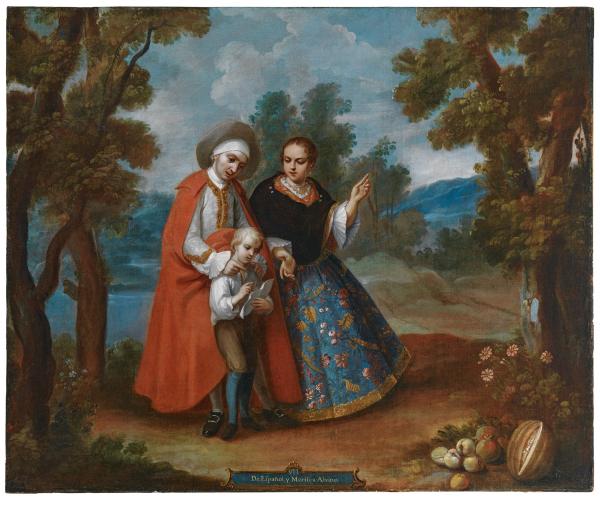Walking through Archive of the World: Art and Imagination in Spanish America, 1500–1800, you may start to notice similar images and themes that appear in multiple artworks—from paintings to textiles and sculpture to decorative arts. When we were installing the exhibition, I began paying close attention to these repeated motifs, including where they pop up and why. Next time you visit LACMA with your family, I challenge you to join me on my scavenger hunt and see how many of the following images you can find!
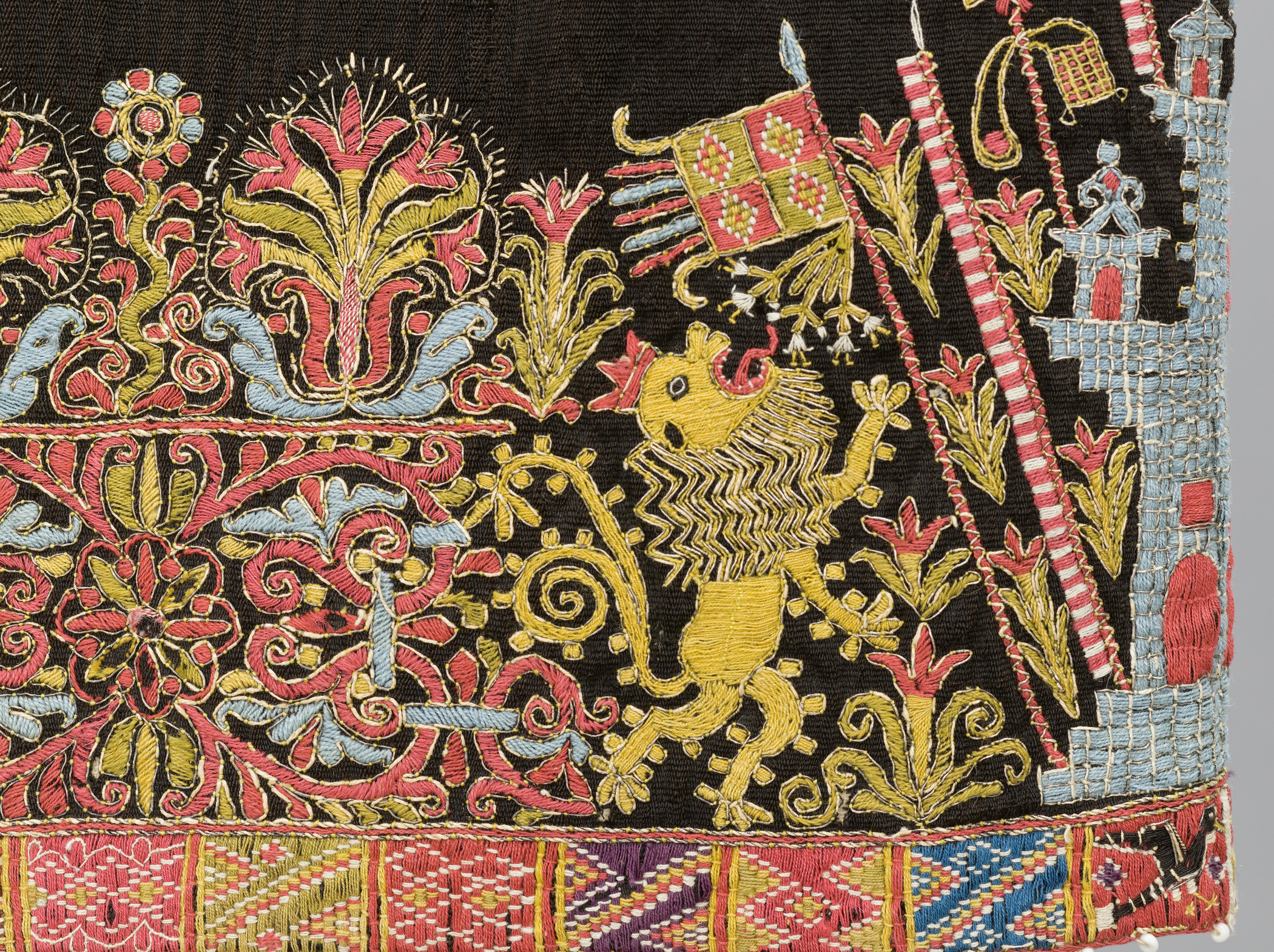
Lions
Lions were typical in Spanish court portraiture to symbolize power and strength. In Spanish heraldry, the lion represented the monarchy (the symbol originates from the Kingdom of León, which is Spanish for lion). Still today, the crowned, rampant (standing on its hind legs) lion can be found on the Spanish flag. The lions included in many of the artworks on view in Archive of the World allude to Spain’s reign over the Americas. I’ve counted eight artworks with lions. How many can you find?
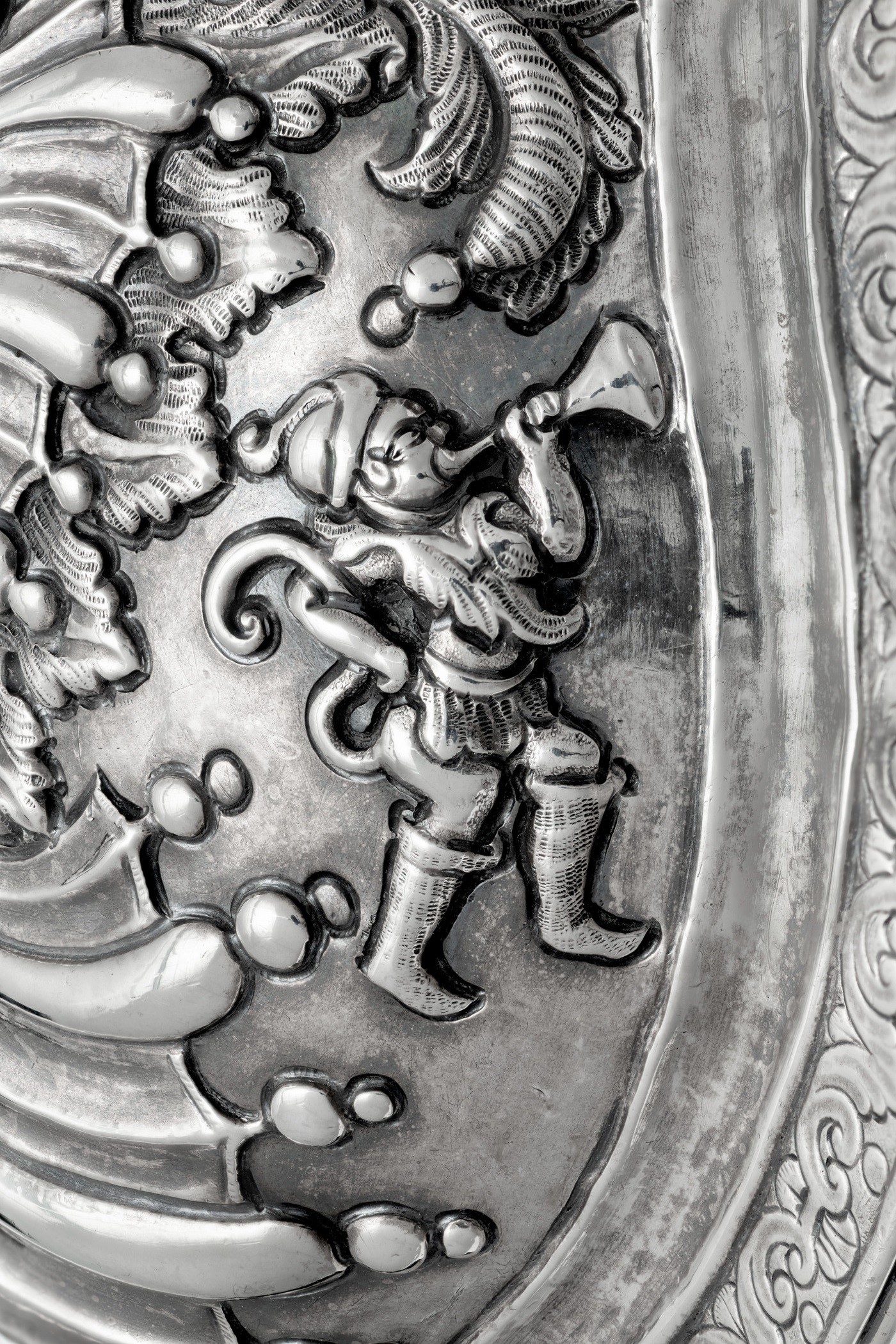
Monkeys
Monkeys are another animal found in several artworks. As opposed to the lion, which symbolized Spain, monkeys were native to regions of Spanish America and were a popular motif before the arrival of the Spaniards. Associated with the rainforest—the outermost tropical regions of the Spanish Empire—monkeys became an object of fascination for Europeans. Viceregal artists included monkeys in their works to show off the richness and wonder of America for their patrons. I’ve found four artworks with monkeys. How many do you count?

Birds
Birds of all kinds are a common motif throughout the exhibition. In the religious artworks in the first gallery, a white dove is often used to symbolize the Holy Spirit. Birds, like lions, were also common in heraldry, where double-headed eagles were an emblem of the Spanish monarchy. Elsewhere, a perched eagle atop a cactus references Mexico’s coat of arms. Throughout the exhibition, birds—often carefully portrayed by artists to represent the local wildlife—inhabit landscape scenes or appear as decorative elements alongside flowers and other animals. I see birds in 30 artworks. How many of these can you find? As a bonus, can you find the artwork that has real feathers in it?
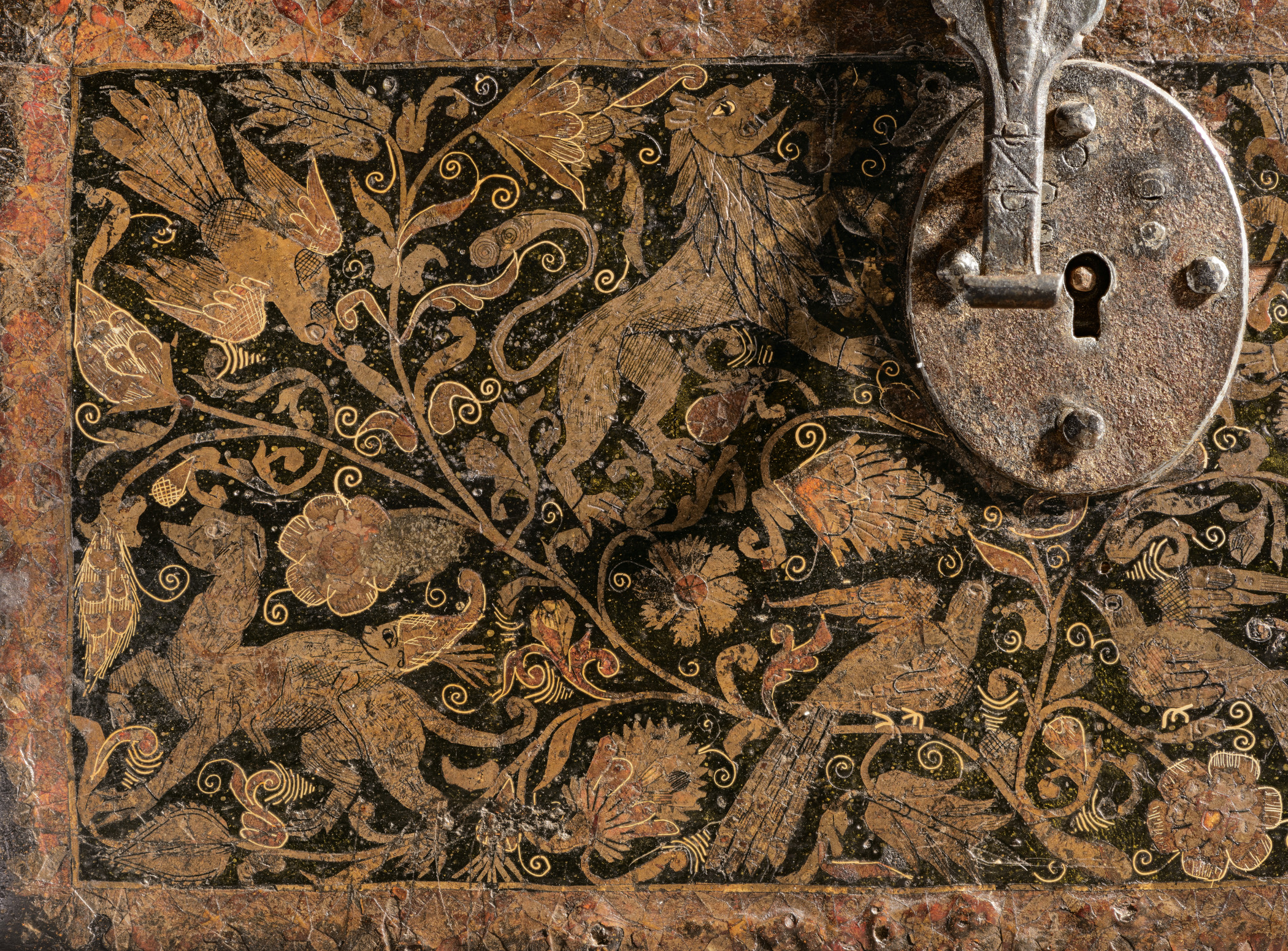
Can you find this chest that has lions, monkeys, and birds all together? To learn more about this artwork, check The Guide for another fun family activity.
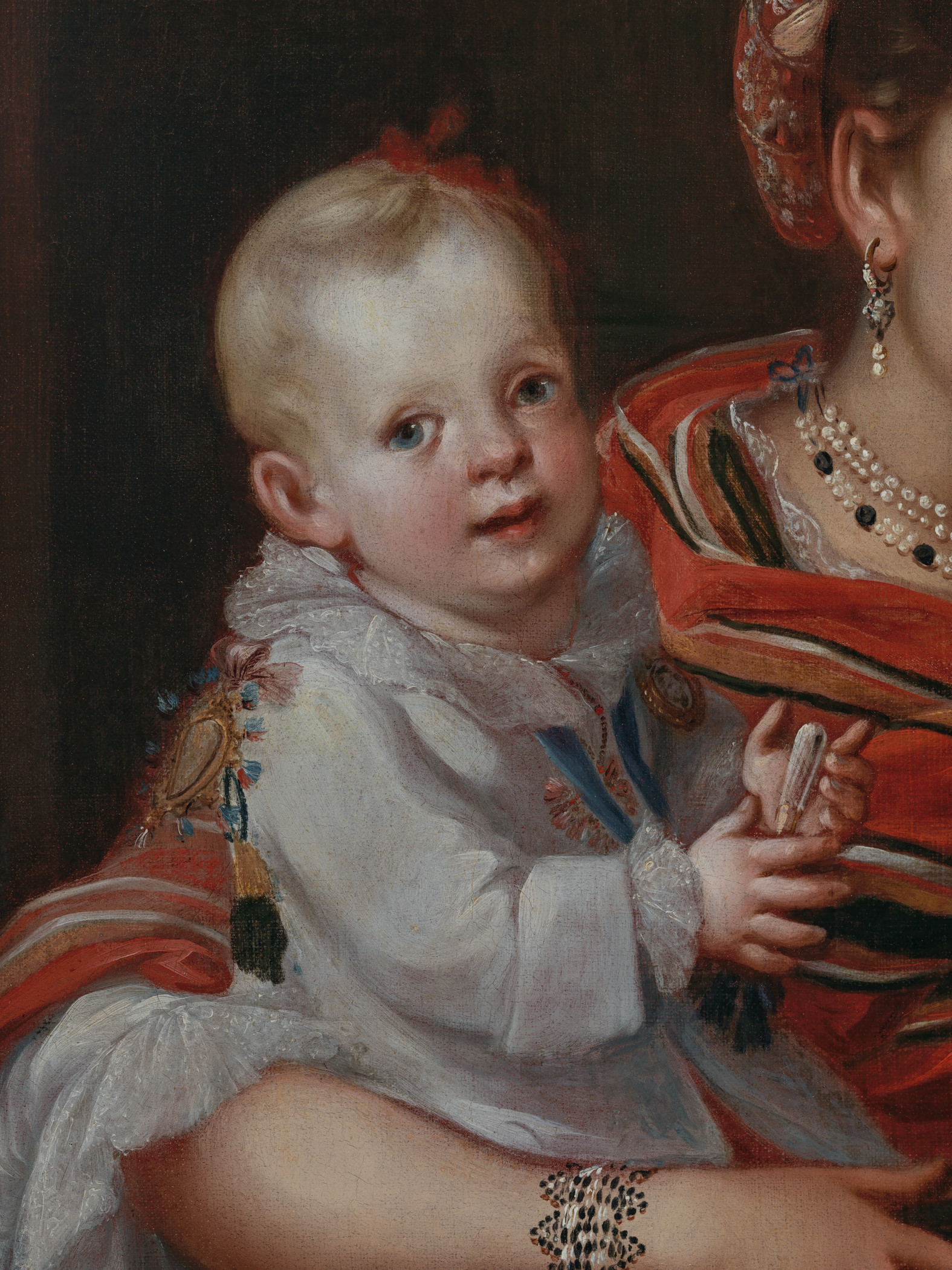
Children
Babies and children appear throughout the exhibition and can represent very different things. Some of the representations in religious artworks are of Christ as a baby, depicting different moments from his life or especially his relationship to his mother, Mary. Some babies have wings and are a special category of angel known as cherubs. In a type of paintings known as casta (caste) paintings, children are shown in family groups with their parents. Other paintings show kids engaged in play or even helping their parents work. I’ve counted 45 artworks with babies and children. How many do you see?
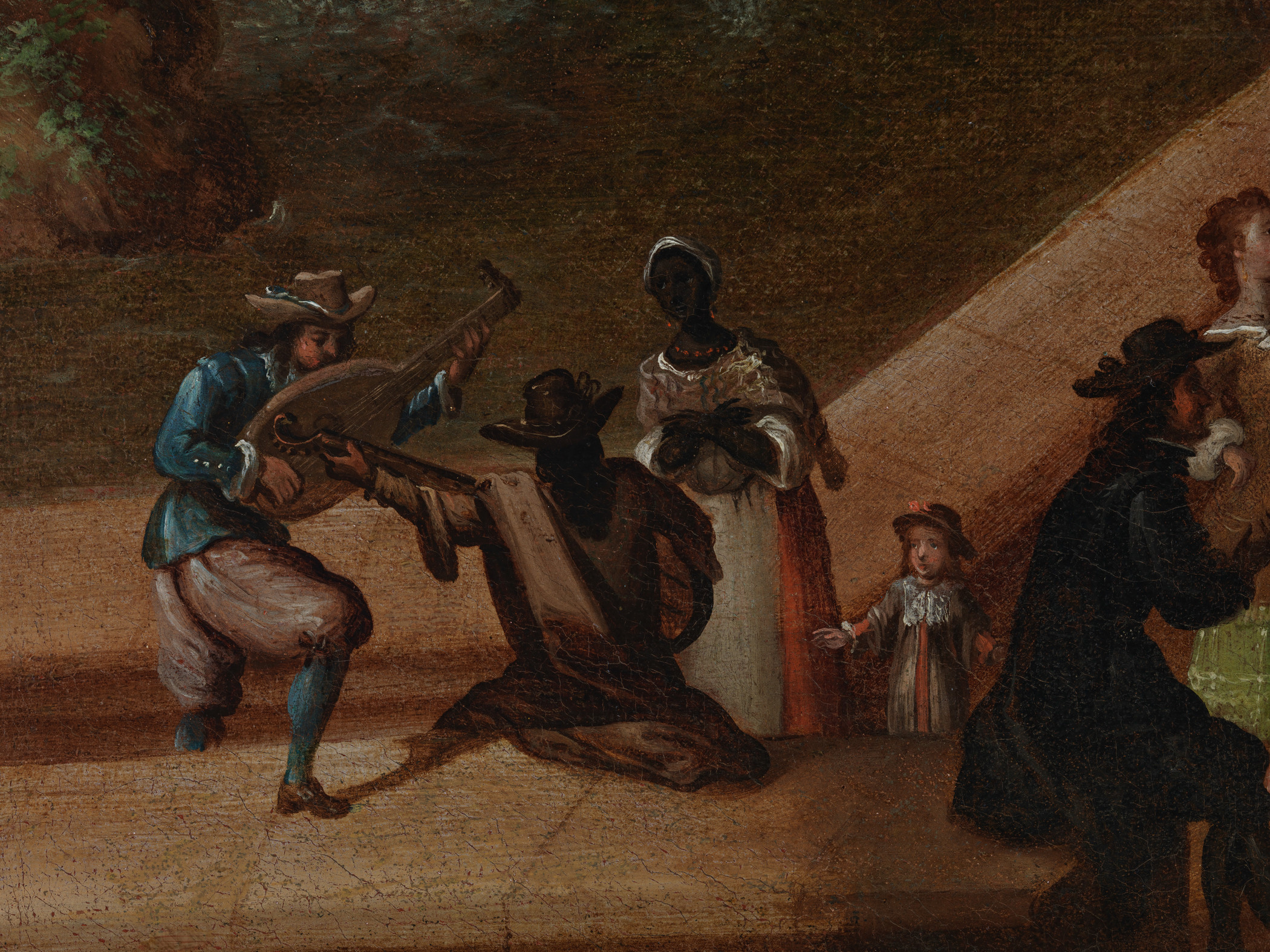
Musical Instruments
Playing instruments can add musical touches to a variety of activities: dance and celebrations, courtship and flirtation, and even battles and hunts. Instruments such as trumpets, lutes, and guitars appear in several of the artworks on view and help us to imagine how a particular scene may have sounded. I see eight artworks with musical instruments. How many can you find?
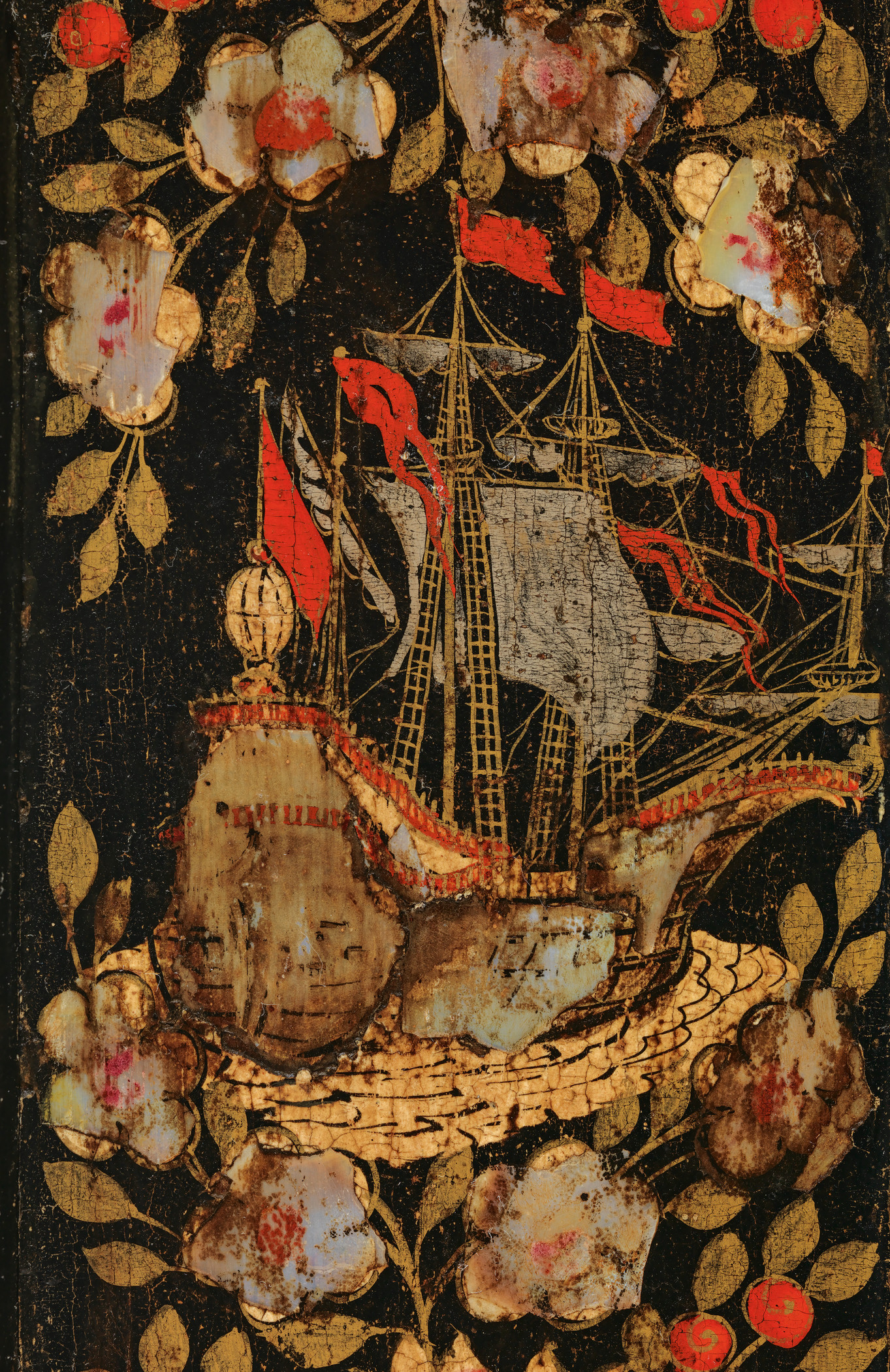
Boats
From small canoes to large sailing ships, boats appear in several works in the exhibition. Canoes offered a mode of transportation over canals in Mexico City, as well as a form of entertainment and a leisure activity across social classes. Larger boats such as the Manila Galleons—the ships that carried goods from the Philippines to Acapulco—could also symbolize trade and prosperity. Sailing across oceans, boats connected the continents and facilitated the exchange of objects and ideas. From canoes to ships, I count five artworks with boats. How many do you see?
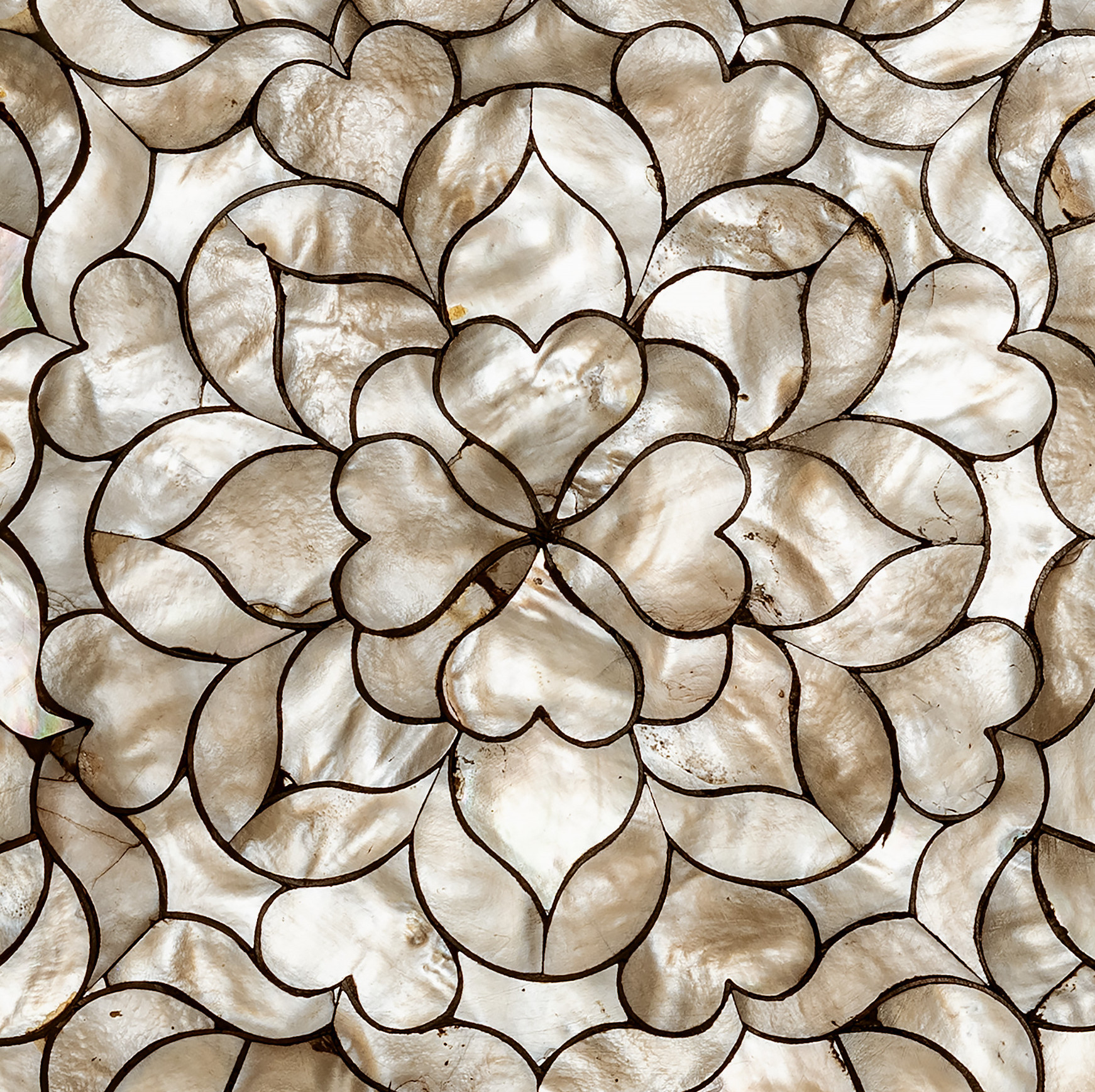
Hearts
Hearts are symbols of love and affection. In religious imagery, figures hand their hearts to Jesus to illustrate their fervor. The Sacred Heart is especially associated with the Jesuit order, and appears in several works associated with their devotional practice. (You can learn more about Jesuits and their promotion of the Sacred Heart of Jesus.) The shape of the heart is a pleasing form that also appears in patterns like the one above. I found hearts in nine artworks. How many can you find?
Come see how many of our scavenger hunt motifs you can find—and see what other repeated images you notice—before Archive of the World closes on October 30. Thanks for playing along with me!



